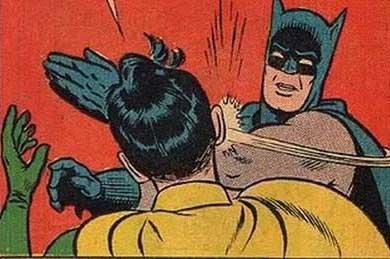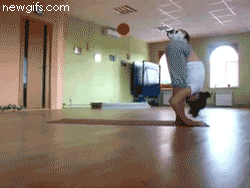1) “Maintaining the short foot position can generate an arch and produce a monstrous feed-forward loop that maintains tension and stability throughout the system reinforcing to the brain that force can be safely produced. When the arch collapses the nervous system quickly downregulates in an attempt to avoid excess force thru the entire lower quarter while in an unstable position, yielding decreased output.” -Seth Oberst on foot positioning
2) Tendinopathy research goes pretty deep. There has been a lot of progress over the years, but there is still a ton we don’t know. Here are 2 posts to update your knowledge: 1) Peter Malliaras’s tendinopathy research post 2) 10 Clinical Pearls from ISTS 2014
3) Adriaan Louw and the ISPI just published a great study on pain education and how it can save the healthcare system a ton of money. Here is a quick flow sheet to understand the process. He also has a nice post on the important question, is it a tissue problem or a pain problem? Adriaan’s Medbridge course is worth the subscription alone.
4) 10 Benefits of Crawling
5) According to research, PRP doesn’t work in shoulders or achilles.
6) What are you really doing with manual therapy? And how do you explain it to your patients? Should you remove certain things to streamline your practice?
7) Great review of the research on pain and posture by Todd Hargrove. “The above evidence suggests that it may be a waste of time to try to identify defects in your static posture according to some ideal model, and correct them as a way to treat or prevent pain.” -“The way you move is more important than how you look standing or sitting. ”
8) Be careful with opinions, theories, and approaches. “Models are approximations of reality. Reality is far too complex to fit neatly into one model.”
9) Open up your hips the GMB way – some great hip mobility drills.
10) I’m a fan of getting my shoulder patients into half/tall kneeling and doing exercises like this.
11) Experienced clinicians already know this, but a new study found that people who blame others, catastrophize, and think life is unfair have more pain after knee replacement surgery.
12) I had a patient that fell off her bike and hit her head. Thankfully she was wearing a helmet and she’s okay. But it’s important to remember the Canadian C-Spine Rules for X-Ray.
13) Strength wins again! New study shows high-load strengthening is more effective than stretching for plantar fasciitis.
14) I love the way Erson teaches MDT. Here’s a clinical pearl on Flexion Rapid Responders.
15) Eric Cressey always has great tips that you can apply to your patients the next day. This is a great one on getting more Serratus Anterior activation during the wall slides.
16) I’ve never even heard of Dynatomes…this current study demonstrates a distinct difference between dynatomal and dermatomal maps.
Dermatomes are the distribution of the sensory skin loss from a spinal nerve root. The Dynatomes are the distribution of symptoms from a spinal nerve root. But keep in mind that there are many structures that can refer peripherally, not just the disc and nerve roots.
17) “89% of the clinically recovered hamstring injuries showed intramuscular increased signal intensity on fluid-sensitive sequences on MRI.”
18) “Aerobic exercise at approximately 70% of maximal aerobic capacity moderately reduces pain sensitivity and attenuates pain, even after a single session”
19) I attended Mark Cheng’s Prehab-Rehab 101 Workshop in NYC. Learned tons of stuff, you can too by reading this.
20) I found this article on how fish evolved out of the water fascinating. #GeneticAssimilation #DevelopmentalPlasticity
21) “Sports-related concussion increases the risk of subsequent injury by about 50% in elite male football players.”
22) The movement world would be a better place if more of the top professionals shared like Charlie Weingroff. You’ll like something in this post. A couple gems: “Part of implicating exposure can be the general nature of twitch of the athlete.” – “some things are so non-linear and multi-variant, that they will look like quite foolish within traditional parametric or non-parametric procedures.” – “Anything can be anything. Indeed anatomy often lies.” – “Strength can solve a lot of things.”
23) Dan Pope goes over 9 reasons to use tempo lifts: Technique, Tendinopathy, Decrease Ego, Decrease Stretch Reflex, Control, Less Pain, Hypertrophy, Variability to Training, & Improving Flexibility
24) “Early ROM exercise accelerated recovery from postoperative stiffness for patients after arthroscopic rotator cuff repair but was likely to result in improper tendon healing in shoulders with large-sized tears (>3cm).”
25) “Neck instability not only leads to a weakened Deltoid but a weakened rotator cuff” –Kathy Dooley
26) The PRI and DNS people gotta love this study on sagittal spinal position. Running with increased spinal extension causes an increase in patellofemoral joint stress. Running with spinal flexion decreases the amount of patellofemoral joint stress. Proximal Influences. Get a Zone, Keep a Cylinder.
27) The timeline of human evolution summed up in a Andreas Vesalius infographic.
28) The American Heart Association came out and said “Manipulating the neck has been associated with cervical dissection, a type of arterial tear that can lead to stroke. Although a direct cause-and-effect link has not been established between neck manipulation and the risk of stroke, healthcare providers should inform patients of the association before they undergo neck manipulation.” The IFOMPT responded by saying that this causes unnecessary fear for the public and that we should realize that “Anti-inflammatory drugs, injections, and surgery for the treatment of neck pain or headaches have much greater risks than cervical manipulation.”
29) Breathing is extremely important. Here’s a study showing it’s effect on muscle activity and cervical ROM.
30) I was discussing chronic pain with a psychologist at NYU and he introduced me to this approach.
31) Here is a nice article on Pull-Up Progressions: Trunk Stability, Horizontal Pulls, Flexed ISO Hangs, Negatives/Eccentrics, Assisted Pull-Ups, Pull-Ups, Weighted Pull-Ups
32) 2 Things I know: 1) You can’t fix stupid 2) You can’t coach through mobility impairments. Gray Cook has a great article on why coaching through mobility deficits is a bad idea. He also goes over his 3 progressive coaching methods: Coaching the Pattern without Load, Assisting the Pattern, and Loading the Pattern and Observing. And remember “They’re learning from the movement, not from your cues.”
33) The Gait Guys put out some of the highest level of information in the social media world. It’s truly amazing stuff that has great implications on how we practice. An example is their unbelievably detailed analysis of tibia torsions. Check out the goods – part 1, part 2, part 3a, part 3b, part4, here, here, and here. Thank you Gait Guys!
34) I think Zac Cupples would be a great person to get a bunch of beers with and talk shop. Here’s his enjoyable post on the Hruska Clinic and other PRI randoms. He also has a solid post on Jen Poulin’s Myokinematics. “The diaphragm is the core of your core. If you’re not using it, you’re missing the boat.”
35) I’m one of the contributors of the Manual Therapy Daily Flipboard Magazine. This magazine has hourly updates on new articles relating to physical therapy, strength and conditioning, pain, fitness, movement, and health.
36) People You Should Know – Elizabeth “Sister” Kenny (1880-1952) was an Australian nurse who helped lay the foundation for musculoskeletal rehab and physical therapy. Sister Kenny’s controversial approach of treating poliomyelitis patients with movement rather than immobilization changed the course of the disease and improved the lives of the millions affected. She courageously went against the normal medical model and created an innovative approach that has changed the way we treat the human body.
37) 3 Top Tweets of the Month
- Nick Winkelman
@NickWinkelman – Coach Tip: The motor system self-organizes to achieve a movement outcome. Cueing the body (ex. Squeeze Glute) interrupts this process. - John Hawks
@johnhawks – The lone scientist is a myth. Great problems today are tackled by teams of scientists with different expertise, working together. -
Ram Dass
@BabaRamDass – Information is just bits of data. Knowledge is putting them together. Wisdom is transcending them.
38) A new device to assess lumbopelvic dissociation





Great collection. Thanks!